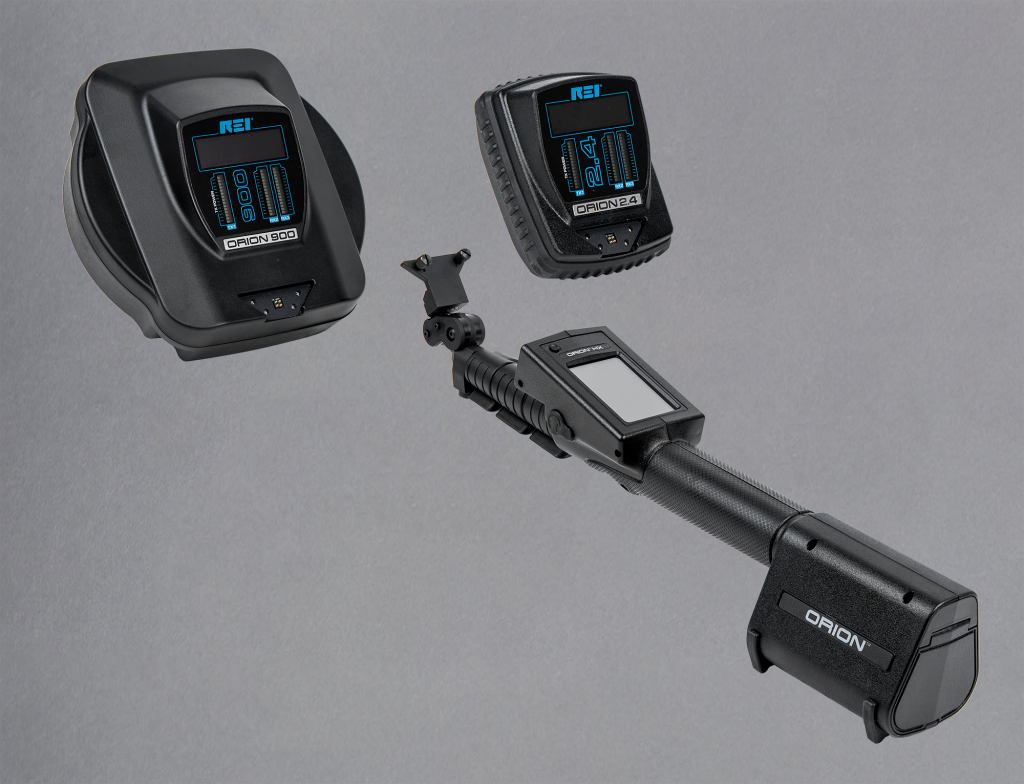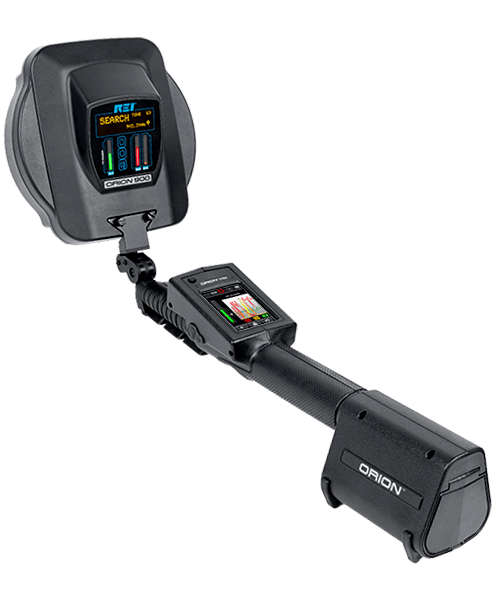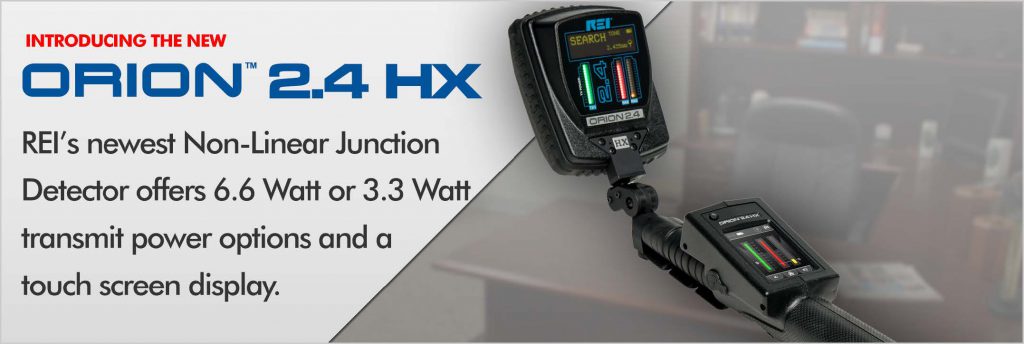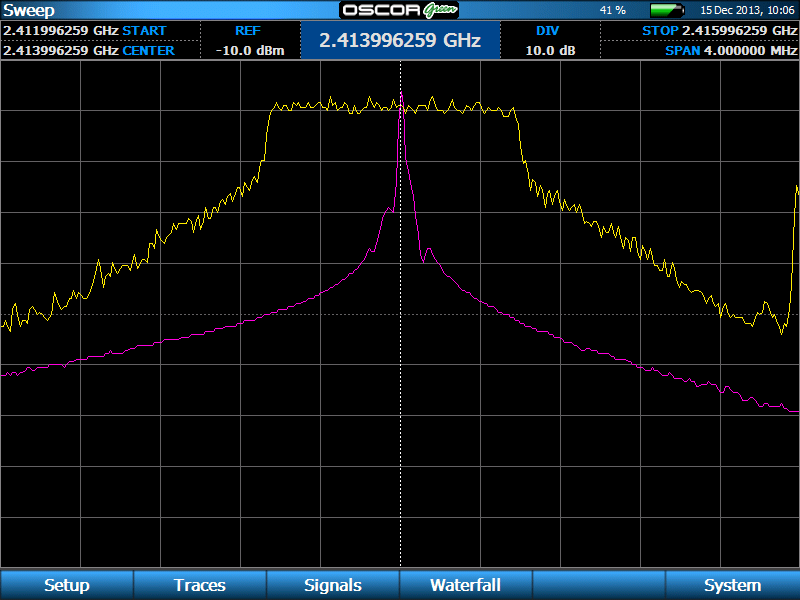The new ORION 900 HX Non-Linear Junction Detector from REI detects electronic semi-conductor components through dense materials such as bricks, concrete, and soil. The longer 900 MHz wavelength excels at detecting older, less refined circuitry and also penetrating building and construction materials compared to the shorter wavelength of the 2.4 GHz model, which excels at detecting modern, surface mounted circuitry in normal office environments.
For those with both applications, a new ORION HX Deluxe package is available which includes interchangeable 900 MHz and 2.4 GHz antenna heads. The antenna heads are easily exchanged in under twenty seconds by simply turning a pair of thumb screws. The touch screen controller on the ORION handle automatically recognizes the attached antenna and displays the corresponding data.
Continue reading “New NLJD Locates Electronics in a Variety of Environments”




